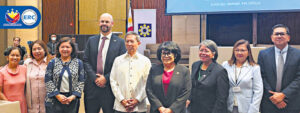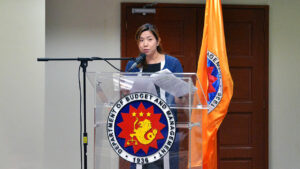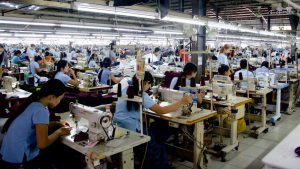The Energy Regulatory Commission (ERC) has been an essential institution in overseeing and regulating the energy sector in our country since its inception. With its commitment to ensuring a dependable, cost-effective, and sustainable energy supply, the ERC has continued to uphold the highest standards and promote a resilient energy industry for the benefit of the nation.
The ERC’s roots can be traced back to the early regulation of public services in the Philippines in the early 20th century. In 1914, the Board of Public Utility Commissioners was created, patterned after the Public Service Law of the State of New Jersey. This board was responsible for regulating public services, including electricity.
With the enactment of Commonwealth Act No. 146 on Nov. 7, 1936, also known as the Public Service Law, the regulation of public utilities, including the electric power sector, was placed under the jurisdiction of the Public Service Commission (PSC). The PSC was responsible for overseeing and controlling public services, ensuring fair rates, and maintaining quality standards in the delivery of these services.
Later on, the government created the Department of Energy (DoE) and consequently abolished the Oil Industry Commission in 1977, which was replaced by the creation of the Board of Energy (BoE) through Presidential Decree No. 1206. The BoE assumed the powers and functions of the Board of Power and Waterworks (BoPW) over the electric power industry.
ERC Chairperson and CEO Monalisa C. Dimalanta participated in BusinessWorld Insights x Project KaLIKHAsan Energy Forum, themed “Achieving Balance in the Philippine Energy System,” last April.
In 1987, significant changes occurred with the issuance of Executive Order No. 172 by President Corazon C. Aquino as the BoE was reconstituted into the Energy Regulatory Board (ERB). The establishment of the ERB was part of the former President’s government reorganization program aimed at consolidating regulatory and adjudicatory functions pertaining to the energy sector under a single entity.
A landmark development in the Philippine energy sector was the enactment of the Electric Power Industry Reform Act (EPIRA) in 2001. EPIRA, or Republic Act No. 9136, was a comprehensive legislation aimed at restructuring the Philippine electric power industry to promote competition, ensure transparency, and improve efficiency in the delivery of electricity services. Under EPIRA, the Energy Regulatory Commission (ERC) was established to replace the ERB.
Decades of driving a competitive energy sector
Since its inception, the ERC has been instrumental in addressing consumer complaints and resolving disputes within the energy sector. According to the ERC’s latest report for the Office of the President’s 8888 Citizens’ Complaint Center, the commission received a resolution rate of 100% of citizens’ concerns from January to September 2023.
One of the ERC’s primary responsibilities is setting electricity rates for transmission and distribution utilities. In 2006, the commission introduced the performance-based regulation (PBR) framework to govern these rates. PBR, an internationally-accepted rate setting methodology, aims to achieve competitive outcomes by incentivizing utilities to improve efficiency and service quality.
In 2013, the ERC implemented the Retail Competition and Open Access (RCOA), allowing large consumers to choose their electricity suppliers. This move was substantial in fostering competition and driving down electricity prices. As a result, industrial and commercial consumers experienced reduced power costs, which in turn benefited the economy.
In 2020, the ERC further expanded the coverage of RCOA, aligned with Section 31 of EPIRA and Rule 12 of its Implementing Rules and Regulations (IRR), which mandates the promotion of competition and the restructuring and modernization of the electric power industry. The new resolution, promulgated by the ERC, extended the RCOA coverage to end-users with an average monthly peak demand of at least 500 kW for the preceding 12 months, starting Feb. 26, 2021.
ERC Chairperson & CEO Monalisa C. Dimalanta joined the Clean and Affordable Renewable Energy (CARE) Convergence 2023 last November to discuss the commission’s role in advancing renewable energy transition in the country.
The ERC’s thorough evaluation of market readiness, infrastructure, customer awareness, and economic impact informed the decision to lower the threshold. Under the new resolution, qualified end-users, now categorized as contestable customers within the 500 kW-749 kW consumption range, can switch to the Competitive Retail Electricity Market (CREM).
The operational RCOA scheme is currently effective in Luzon and Visayas grids. With the expanded implementation, further reductions in electricity rates are anticipated and are expected to attract more investors, create job opportunities, and contribute to the country’s economic recovery, particularly in the aftermath of the COVID-19 pandemic.
In 2023, the ERC issued 14 rules and regulations, 77 decisions, and 1,156 orders as of December 2023, demonstrating its commitment to regulatory clarity and consistency. The commission also issued Certificates of Compliance (COCs) for 135 independent power producers, 4,124 qualified end-users, 489 self-generation facilities and distributed energy resources, and 7 retail electricity suppliers.
Furthermore, the ERC tested and calibrated 2,073,598 new watt-hour meters, approved 33 new meter types, certified 22 meter shops, and conducted 36,988 in-service testing in November 2023.
Meanwhile, the ERC has launched the full implementation of the Lifeline Rate Subsidy Program last January, aimed at providing significant discounts on electricity bills for qualified low-income households.
The program is designed to alleviate the financial burden on poor households by subsidizing their electricity costs. Qualified beneficiaries, specifically those enrolled in the Pantawid Pamilyang Pilipino Program (4Ps) and other low-income electricity consumers who use no more than 100 kilowatt-hours (kWh) per month, are eligible for the subsidy.
As of the latest data, around 4.2 million households are beneficiaries of the 4Ps, which forms a significant portion of the lifeline rate subsidy target group. The average monthly electricity consumption for these households typically falls well below the 100-kWh threshold, making them prime candidates for the subsidy. According to the ERC, the subsidy can reduce electricity bills by as much as 50%, providing substantial financial relief to these households.
The lifeline rate subsidy is established under Republic Act 11552, which extends and enhances the implementation of the lifeline rate as specified in Section 73 of Republic Act 9136, also known as the Electric Power Industry Reform Act.
The ERC also played a crucial role in implementing the Renewable Energy Act, which aimed to accelerate the development of renewable energy sources. The ERC remains committed to fostering the growth of the sector for the country to attain energy self-reliance and reduce dependence on fossil fuels.
In a statement, ERC Chairperson Atty. Monalisa C. Dimalanta said that there has been a 20% increase in renewable energy utilization in the Philippines since 2008. With the energy sector valued at P7.6 trillion, the chairperson shared the responsibilities of the commission, including enforcing least-cost pricing, promoting market competition, and providing consumer choices.
The ERC’s regulations facilitated the integration of renewable energy into the national grid, contributing to a more sustainable energy mix. Hence, the implementation of policies promoting renewable energy has led to substantial growth in this sector. As of 2022, the current energy mix in 2022 is made up of 32.7% of renewable energy.
A vision of independence and fairness
In a recent address, Atty. Dimalanta said that the ERC operated with a budget of over P1.2 billion in 2023, the highest budget allocated to the commission since its establishment. The chairperson emphasized that the agency must use the budget wisely to fulfill its responsibilities and ensure the efficient and effective regulation of the energy sector.
Regarding renewable energy (RE), the Philippine government aims to increase the share of RE in the supply mix to 35% by 2030 and 50% by 2050. This will be achieved by promoting energy efficiency and conservation, as well as pursuing emerging technologies to ensure energy security.
In addition, the ERC and the Board of Investments have joined forces to address issues in the electric power industry, aiming to attract more investments in the Philippines.
Both agencies have agreed to work together to effectively address issues in the electric power industry, particularly those affecting contestable customers who are struggling with financial distress caused by abrupt increases in power rates leading to disconnection of power supply.
The partnership is expected to have a significant impact on investments in the Philippines, particularly as the world transitions to green energy.
Atty. Dimalanta also revealed ERC’s partnership with the National Economic and Development Authority (NEDA) in developing an affordability index during the Foundation for Economic Freedom’s monthly Fellows Meeting in 2023. This index is expected to provide clearer metrics on the energy sector’s performance across different regions, aiding in better energy efficiency planning.
The chairperson emphasized the importance of the commission’s independence, credibility and fairness in its regulatory decisions. Hence, the ERC will continue to engage with stakeholders and implement programs aimed at promoting transparency, accountability, and public participation in the energy sector. — Mhicole A. Moral





